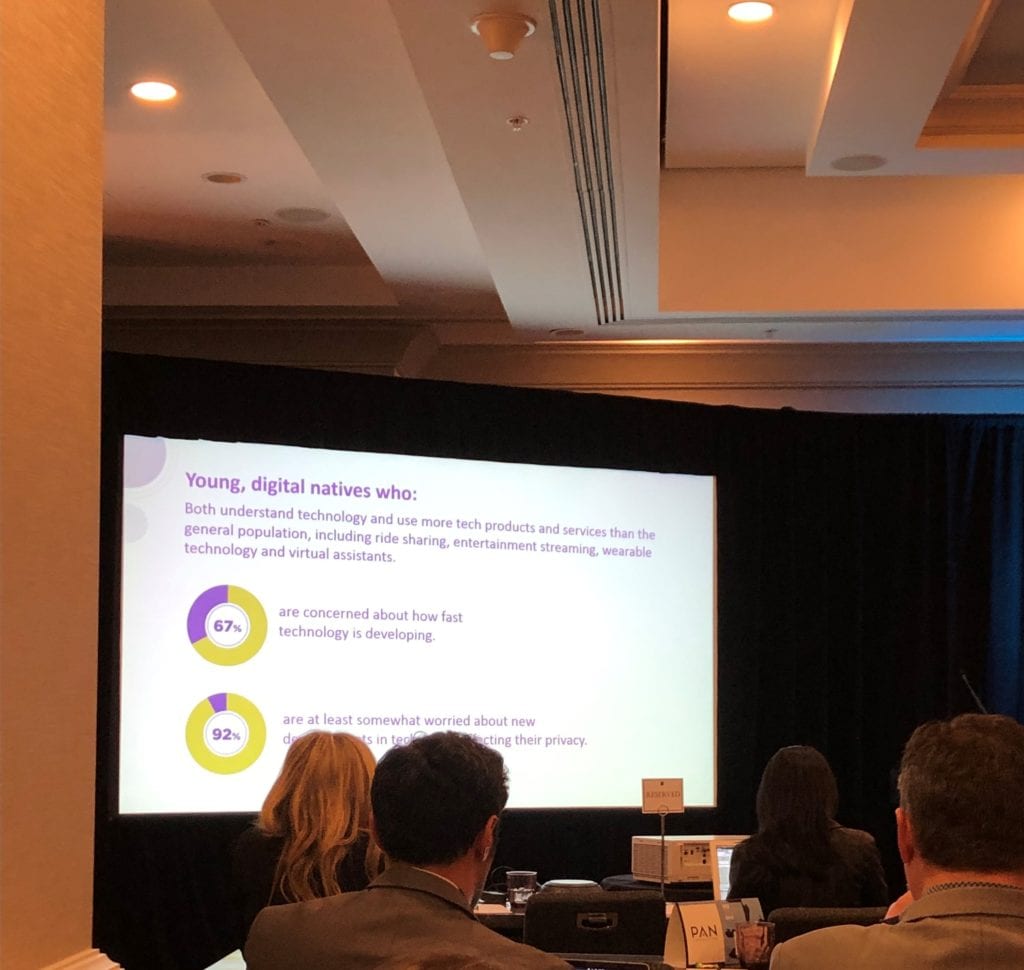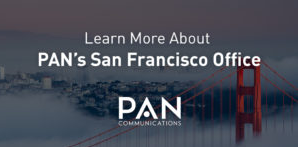The Holmes Report’s IN2 Innovation Summit, hosted last month in San Francisco, brought communicators of all kinds together under one roof. From global communications to product messaging professionals, presenters shared personal experiences and best practices for achieving communications success. As a healthcare and tech PR pro in San Francisco, here are my key takeaways from the event. 
Companies Need to Take ‘Techruptors’ Seriously
Every day we see a new headline around privacy and personal data. This news cycle, paired with the onset of the California Consumer Privacy Act, should be enough to urge all companies (and their communications teams) to thoroughly and clearly state what data they have access to, and what they do with this data.
Panelists Brian Buntz, editor at IoT World Today, and Andrada Morar of Hewlett Packard Enterprise discussed the fine balance between convenience and privacy, and how it is becoming innate for consumers to evaluate whether the benefit is worth the sacrifice. It’s up to companies to effectively share why the benefit is worth it, and to explain why consumers shouldn’t be afraid of their company having access to personal information.
As someone who works in both technology and healthcare, I find myself leaning towards sharing personal data when the benefit directly relates to my own health and improving outcomes, versus say targeted advertising. This panel encouraged me to think more closely about how, as a consumer, I react to communications around what my data is being used for, and how I can bring this mindset into my PR activities.
The panelists discussed how there are so many companies gathering consumer data but not using it, and how this model – in today’s privacy landscape – will not stand for success. Companies must have a clear purpose and mission supported by the data they collect, and communication should support why the benefit outweighs the potential risk of sharing personal information.
Preparing for Generation Alpha
This session explored marketing technology and other products/services to a demographic I rarely think about in the context of PR – those born after 2010. During this panel, Aarti Shah of the Holmes Report, Colby Zintl of Common Sense and Laura Macdonald of Hotwire dove into research and discussed ethics around marketing tech products and services to this generation and their parents, and talked about what growing up in the age of technology really means – the good and the bad.
While less directly related to my day-to-day, I was fascinated by the idea of marketing to people who don’t have the ability to make purchases on their own, yet are far more comfortable with technology than their parents may be. Research from Hotwire found that by the age of 8, parents already feel outsmarted by their children when it comes to technology.
The benefits of this generation’s technological knowledge may seem obvious: convenience, education in the form of games, gaining tech-based skills at an early age, etc. But I was shocked to hear some of the negatives – and feel it’s crucial for companies developing tech for younger generations to consider these results as well. For instance, research found that children are losing the ability to retain facts and information, because they are accustomed to having questions answered instantly by Siri, Alexa and Cortana. Additionally, these virtual assistants have female voices, conditioning children to demand convenience from ‘women.’
These frightening facts can serve as an opportunity for brands to remember kindness when developing products that are either designed for children, are likely to be used by younger generations, or that parents will frequently use in front of their children. Keep digital wellbeing in mind and do your part to develop technology that encourage positive interactions, so that those actions translate positively to human encounters.
Breakthroughs in Tech: From Creation to Communication
Working in PR in San Francisco, I often find myself questioning or challenging messaging that my clients have developed and are passionate about. Not because I like to be difficult, but because it can be easy to lose sight of how others who are not close to the company may perceive your technology solution.
As the technology landscape becomes more and more crowded, gone are the days of developing a “cool” technology solution and finding a use for it later. To be successful, tech products and services need to be intentional – solve a problem or have a tangible benefit – and these benefits must be communicated in a clear and meaningful way.
Panelists Aaron Stout of W2O Group, Jason Alderman of Clover Health, Leslie Campisi of Anthemis Group, Gabriel Stricker of Niantic, Inc., and Mary Stutts of Stanford Healthcare discussed how innovators must be candid about what a service is intended to do, and explain it in a way their audience can understand.
For example, Alderman shared how Clover Health is challenged with addressing an audience of seniors, who are likely less familiar and comfortable with technology. Because of this target audience, the company’s communication efforts need to be tailored in a way that seniors can understand. Further, innovative companies may find a disconnect once a product is released: Are customers using this the way we intended? Part of a successful communication program is demonstration— showing how to use a service and encouraging users to model this behavior, in order to get the desired outcome.
Technology is becoming more complex and even millennials that have comfort with consumer technology are finding themselves confused and overwhelmed. With this in mind, it’s important for tech companies to understand the value in communicating their product clearly, simply, and in a way that will connect with their audience.





